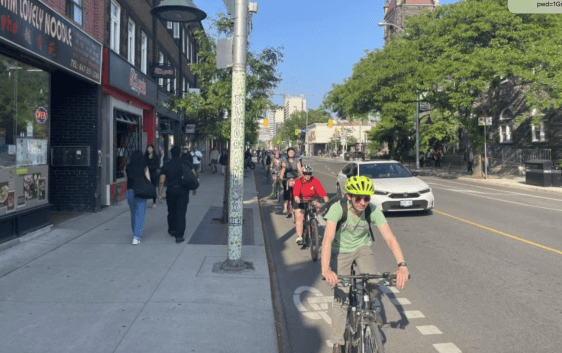 Four of these six routes will be discontinued or have reduced service. Flickr photo: 4nitsirk
Four of these six routes will be discontinued or have reduced service. Flickr photo: 4nitsirkThe SamTrans Board of Directors voted today to cut nearly all express routes to San Francisco, reduce service on several local lines, and raise adult one-way fares by 25 cents in an effort to narrow a $28.4 million budget deficit. The express route cuts include the MX, NX, PX/RX, DX, and the FX. The KX will survive, but will no longer serve Palo Alto and will be reduced from 30-minute to 60-minute headways. The 342, a local route serving Millbrae, will also be discontinued.
The changes will save a total of $7.3 million, about half of which will
be realized during fiscal year 2010, which started in July.
Several other local routes, including the 280, 14, and 141 will have reduced weekday frequencies. The 390 and the 391, which are SamTrans' highest-ridership routes, will maintain their current weekday schedules, but will drop from 30-minute to 40-minute headways on the weekend.
In spite of the breadth of the cuts, most members of the public at the hearing supported the plan, since it doesn't cut any coast-side routes, and generally makes cuts where there are the fewest riders. The express routes on the chopping block had a combined daily average ridership of 1,079 in July, far fewer than routes like the 390, which averaged 6,364 daily riders alone during the same period. Nearly half of the people in attendance stood up when asked if they were attending in support of the coast-side routes, which, unlike the express routes, are not duplicated by Caltrain or BART. Many speakers expressed gratitude to the board for sparing route 17, a coast-side line that many said they are dependent on to get to employment.
"We've listened to the neediest, rather than the loudest," said board member Jim Hartnett, who added it was "one of the saddest days" in his years on the SamTrans board because of the depth of the cuts. Hartnett said the cuts were decided on "principle, not politics," and thus it was also "one of his proudest days" on the board. Hartnett also added that the board needs to seek new sources of revenue to fix the agency's structural deficit and not rely on state transit aid, which has been slashed.
Board member Adrienne Tissier, who is also a San Mateo Country supervisor, said that advocates need to turn their attention to the state level to demand that state aid be reinstated so similar cuts are averted in the future. "Money that should have been in the transit pot has been taken away" at the state level, Tissier said.
The call for new revenue sources was picked up by Michael Scanlon, the General Manager and CEO of SamTrans. "You can raise fares until hell freezes over, but it's not going to do very much" to ultimately cover the budget gap, Scanlon said. "We've got to find a way to get a new revenue source."
Pressure to do so will be mounting quickly, as SamTrans still needs to cover the bulk of its $28.4 million deficit for fiscal year 2010. Service cuts and fare increases will "only address a portion of our deficit," said SamTrans Deputy CEO Chuck Harvey. "We'll be back if state aid or revenue doesn't improve."
The fare increases include a jump from $1.75 to $2 for a one-way bus ride, and from $56 to $64 for an adult monthly pass, as well as increases across the board for discount passes. In total, the fare increases will only generate $400,000 for fiscal year 2010, a drop in the bucket compared to the total deficit.
Few of the service reductions will be painless, and some will especially challenging. One change that may affect a transit-dependent population without an alternative is route 280, which services East Palo Alto and Palo Alto, and will be reduced from 30-minute to 60-minute headways on Monday through Saturday.
Ultimately, the changes will result in a 7.5 percent service reduction system-wide. Scanlon cited a Transportation for America study that said nearly 90 percent of all transit agencies are cutting service as a result of the recession, including nearly every Bay Area agency. SamTrans was able to make cuts that most riders seemed to consider the most logical given the circumstances, but long-term, Scanlon said, "We need to be advocates at every level" for funding, or transit may wither away just as it's poised for a revival.




